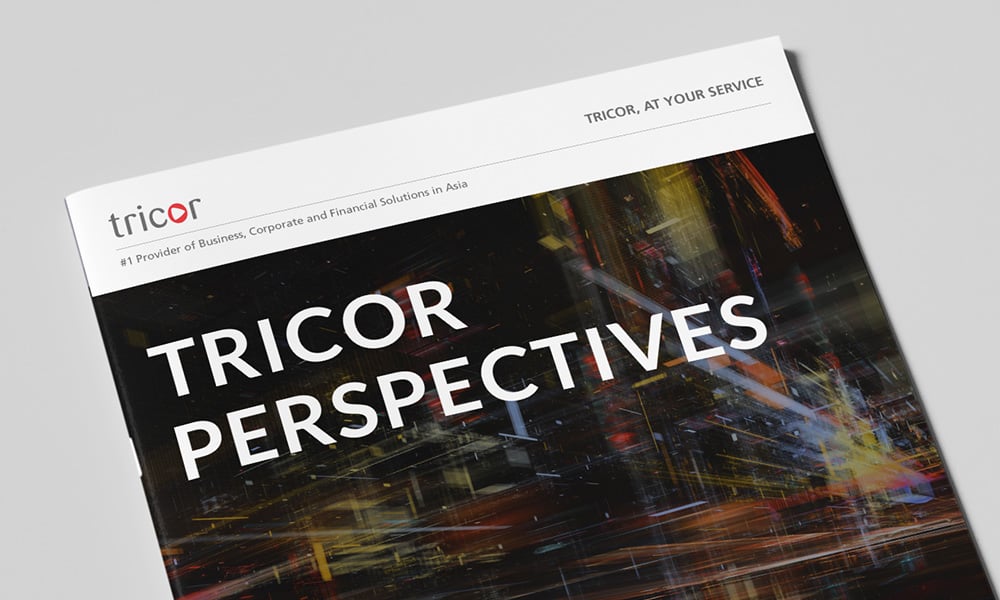The past year's events have heightened risk awareness among companies, with business preservation now seen by many as a priority. Heads of family, in particular, should look closely at continuity planning given their heightened exposure to key-person risk.
An estimated 85% of businesses in Asia Pacific are family-owned. Even among those companies that have grown large enough to list on the public markets, statistics show that, in over half of these, at least 20% of direct shareholding and voting rights are still held by the founders or their descendants.
The issue of key person risk is not new, but the pandemic has given it renewed focus. Heads of family – the 'key person' in question – are typically older, placing them in a higher-risk health category. Therefore, potential hospitalisation or quarantine could substantially disrupt a firm's operations. How, then, should companies think about reducing the potential impact of such risks?
Hong Kong Company Structures
The first step is to understand that operational disruption can vary depending on how the enterprise is arranged. We will look at three types of business structure in Hong Kong:
- Operating Companies
- Listed Companies
- British Virgin Island ("BVI") holdings.
Implications for an Operating Company
If a key person cannot function, the possible impacts on an operating company include project delays and missed business opportunities. The individual, for example, may be unable to execute project documents – a pressing issue if a wet signature is demanded.
There are several ways operating companies can mitigate the impact of such an event:
- Ensure alternate directors have the authority to execute such documents
- Appoint a competent corporate secretary
- Issue Power of Attorney, if necessary, to a capable alternate
- Modernise the company constitution to cater for the above solutions
Disruptions at the Listed Company Level
As we move up the holding structure, the operational impacts stemming from a key person's temporary loss also change.
For listed companies, the absence of a board chairman who can preside over general meetings could be complicated by a company constitution that does not permit virtual meetings. The potential outcome is an incomplete or chaotic general meeting that has to be quickly adjourned.
Listed enterprises may see a drop in shareholder value, business slowdowns, or even a loss of business-critical information or company credibility. The subsequent transfer of the key person's shares could also cause majority shareholding power to dissipate – affecting the ability to influence the decision-making process.
The solution here is relatively straightforward – hybrid meetings. A similar approach was adopted at the height of the pandemic. Of course, the company's Articles of Association may require amending to include provisions permitting hybrid meetings (or removing those that prohibit virtual ones).
Repercussions for BVI Holding Companies
For BVI holdings companies, an absent key person could hinder the passing of resolutions. These companies could also find themselves in deadlock, especially since the probate application process is very drawn-out. This may even result in assets (including shares in the listed firm) being frozen. Again, appointing additional directors or authorized representatives (and issuing a power of attorney, where necessary) can mitigate the person's absence. Technology solutions – such as using e-proxy voting – can also help.
The Structure of a Proper Succession Plan
While no family likes to ponder the prospect of losing its head, it is an eventuality that must be prepared for. This makes appropriate planning for succession a vital consideration. Before we look at solutions, it's crucial to understand the goals of a proper succession planning process. Broadly speaking, there are three:
- Continuity of shareholding: Should a founder pass away, their shares need to be smoothly transferred to predetermined beneficiaries without any disruptions to the high-level decision-making process.
- Retention of majority controlling shares: If the founder's shares are split among multiple beneficiaries, the company's operating ability may be fractured. Family disputes over inheritance are unfortunately all-too common. An ideal succession-planning process would enable competent decision makers to direct the company – regardless of whether they are a direct beneficiary or not.
- Recognition of inheritance taxes: Neither the BVI nor Hong Kong currently apply estate taxes. However, the issue of estate taxes also depends on the location of the deceased founder.
The Private Family Trust Solution – Three Birds with One Stone
There is one succession-planning vehicle that can fulfil all three goals – the private family trust. With this structure, a key person's shares can be pre-emptively entrusted to an independent third-party trustee. This allows for continuity of shareholding, as the shares held in the trust would be protected against things like creditors' claims.
The different types of trusts and the wide range of specific provisions that can be put in the Trust Deed also provide a high degree of flexibility. For instance, the founder's beneficiaries can receive the economic benefit of the shares without the trust having to surrender majority control over the company. If deemed necessary, the heirs may even be excluded from the business decision-making process entirely.
As there are many types of trusts, each designed to meet different needs, companies must seek experts' advice before implementing their succession plan. It is always more efficient to do it right the first time, rather than being forced to restructure it later.
Risk Awareness is Now Higher – Companies Can Plan for the Future
Key person risk has always been an essential issue for family-owned companies – the pandemic just highlighted it. This may actually be a silver lining, as it means that families are now more aware of such risks and can take concrete steps toward implementing solid mitigation plans. Yes, these may involve costs in the short term. Over the longer term, companies will emerge stronger and more resilient.






